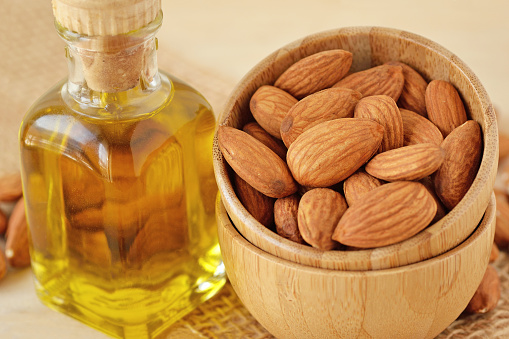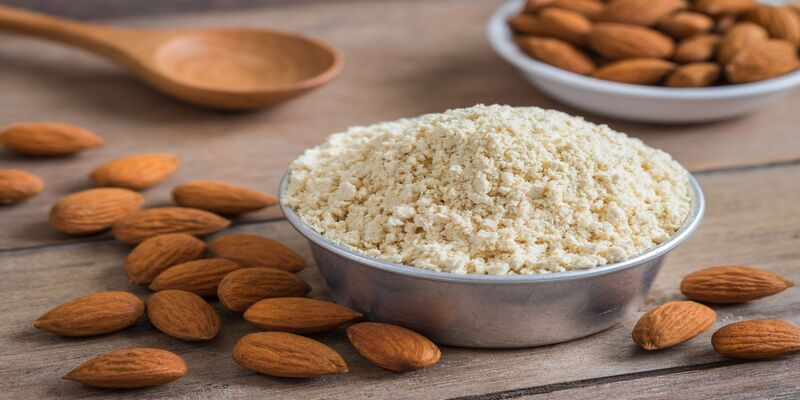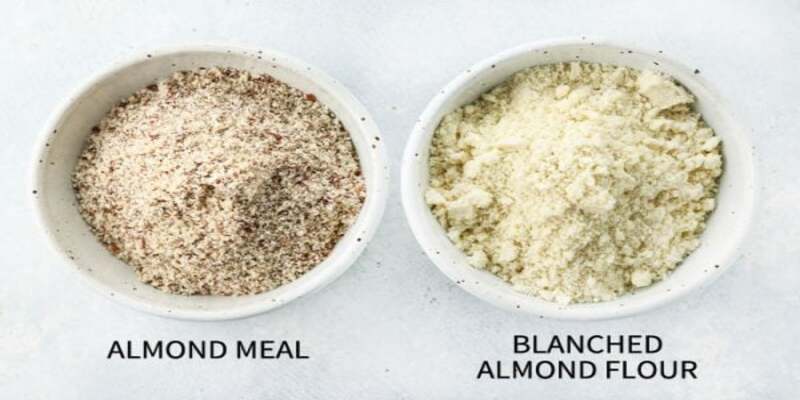Many people use the wrong ingredient in their cooking or baking because they need clarification on the difference between the almond meal as well as almond flour. While both include almonds in their construction, they serve distinct purposes in the kitchen because of these variances. Almond flour is a finer grind formed from blanched almonds even without skins, making it smaller and with a smooth texture than almond meal, a coarser almond powder that retains the skins and is a little more gritty. To ensure you utilize the proper ingredient for something like the right recipe, knowing the distinctions between the almond meal as well as almond flour is essential. Understanding the difference between almond meals as well as almond flour is crucial whether you're on a gluten-free or paleo regimen or want to broaden your culinary horizons.
Almond Flour Vs Almond Meal: Understanding The Differences
Almond meals and almond flour are often used in the kitchen, particularly in baking and other culinary endeavors. There are several vital distinctions between the two, even though they may give the impression of being identical. In this post, we will cover the differences between almond meals and almond flour, the advantages and disadvantages of each, and when you should use one over the other in the kitchen (both for savory and sweet dishes).
What Is an Almond Meal?
Almond meal is a more coarsely ground form of almonds than almond flour, and it retains the almonds' skins. Almonds, with their skins, are ground into a powder to produce this ingredient. Baking, cooking, and even the preparation of nut kinds of milk are just some of the many uses that can be found for almond flour in the kitchen. Almond meal is a very versatile product.
What Is Almond Flour?
On the other hand, blanched almonds are used to make almond flour. This means the almonds' skins have been removed before the grinding process. Compared to an almond meal, it consists of almonds that have been ground to a finer consistency and are lighter in appearance and feel. In gluten-free recipes, almond flour is often used as an alternative to wheat flour. Additionally, paleo and low-carb diets make frequent use of almond flour.
Differences In Texture And Color
Almond meal and almond meal are easily distinguished from one another by their distinct textures and appearances. Compared to almond flour, almond meal has a surface that is more grainy and has a coarse consistency. The gritty texture of the meal is contributed to by the almond peel, which is also responsible for the meal's somewhat tawny appearance. On the other hand, almond flour is more translucent in appearance and has a texture that is both finer and more velvety. This is because the skins have been removed, which has resulted in a smoother and lighter texture.
Differences In Nutritional Profile

The nutritional profiles of almond meals and almond flour are also different. Because it is created using almond skins rather than blanched almonds, an almond meal is a richer source of fibre and protein than almond flour. On the other hand, almond flour contains a little larger percentage of fat but fewer carbohydrates and proteins than different types of flour. Almond meals and almond flour, both ground almonds, are very nutritious because of their high levels of beneficial fats, vitamins, and minerals.
Differences In Baking Properties
When it comes to baking, the distinctions between almond meals and almond flour are more pronounced. Almond flour is more finely ground than an almond meal. Because almond meat is more solid and heavier than almond flour, it is not as well suited to prepare delicate baked products such as cakes and pastries. On the other hand, almond flour is less dense and more finely ground, making it a superior choice for the kinds mentioned above of baked items. In addition, almond meal has the propensity to absorb more moisture than almond flour does, which may lead to the creation of baked items that are more weighty and thick.
When To Use Almond Meal
Because of its versatility, almond meal is a versatile ingredient that may be used in the kitchen for various applications. This makes the almond meal a valuable component. This ingredient is very beneficial to manufacturing nut kinds of milk and incorporating textural elements into baked goods. In addition, almond flour may be used as a topping for baked goods such as muffins and cakes and as a coating for meat, fish, and vegetables during the breeding process.
When To Use Almond Flour

Baking with gluten-free and paleo diets often calls for almond flour as an ingredient. Many different recipes, such as those for cakes, muffins, loaves of bread, and pastries, may be used in place of wheat flour to get the desired results. Another fantastic alternative is to use almond flour when it comes to producing gluten-free crusts for pies and tarts. Compared to an almond meal, it has a more delicate texture and is ground to a finer consistency, making it an ideal choice for fragile baked items.
Conclusion
In conclusion, almond meals and almond flour are both made from almonds but have distinct differences in texture, nutritional profile, and use. An almond meal is a coarser grind containing the almonds' skins and is best used in cooking and as a breading. On the other hand, Almond flour is a finer grind made from blanched almonds and is best used in baking as a substitute for wheat flour in gluten-free and paleo recipes. When choosing between almond meals and almond flour, you must consider your recipe and the desired outcome. Understanding the differences between these two ingredients can help you make informed choices and use the suitable ingredient for the right dish.



